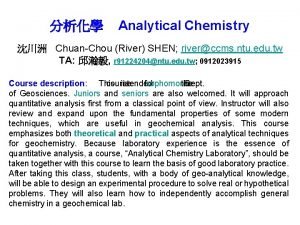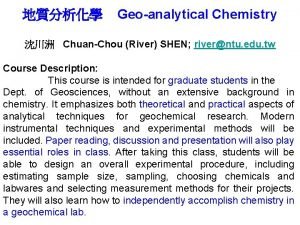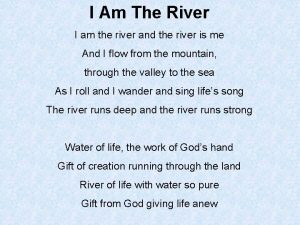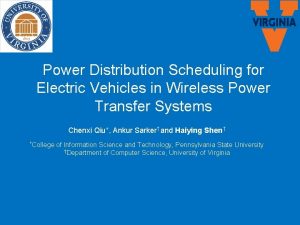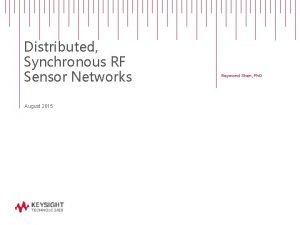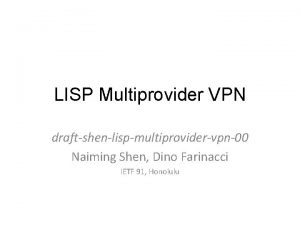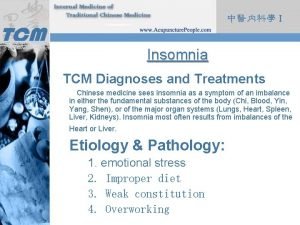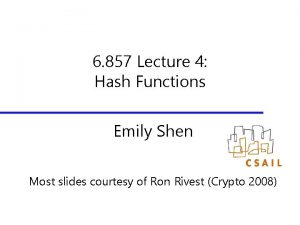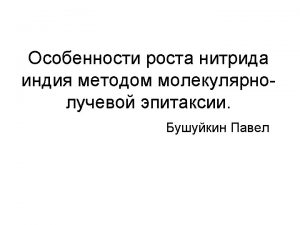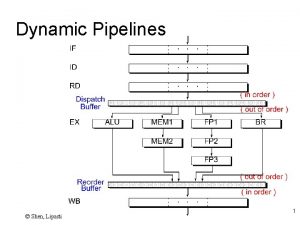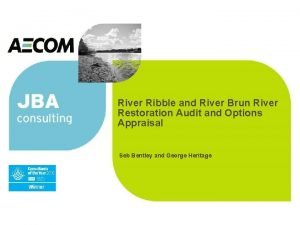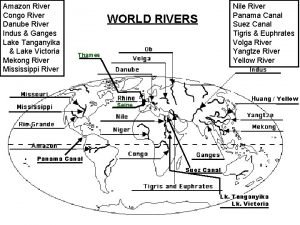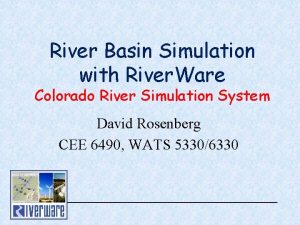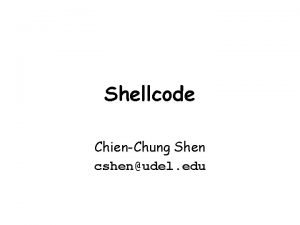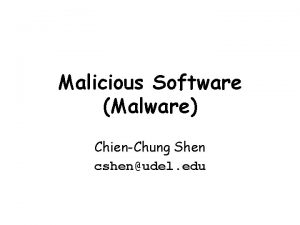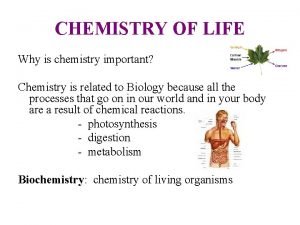Geoanalytical Chemistry ChuanChou River SHEN riverntu edu tw



















- Slides: 19

地質分析化學 Geo-analytical Chemistry 沈川洲 Chuan-Chou (River) SHEN; river@ntu. edu. tw Course Description: This course is intended for graduate students in the Dept. of Geosciences, without an extensive background in chemistry. It emphasizes both theoretical and practical aspects of analytical techniques for geochemical research. Modern instrumental techniques and experimental methods will be included. Paper reading, discussion and presentation will also play essential roles in class. After taking this class, students will be able to design an overall experimental procedure, including estimating sample size, sampling, choosing chemicals and labwares and selecting measurement methods for their projects. They will also learn how to independently accomplish chemistry in a geochemical lab.

Literature: Quantitative Chemical Analysis by Daniel C. Harris Fundamentals of Analytical Chemistry by Skoog and West Statistics for Analytical Chemistry by Miller and Miller Data Reduction and Error Analysis for the Physical Sciences by Bevington and Robinson Text materials: Selected chapters, class handouts, papers. Credits: 2 Class hours: 7: 00 -9: 00 pm, Thursday Grading: Homework, 10%; Midterm exam, 30%; Report and presentation, 20%; Final, 40%.

Syllabus: Sept Introduction, Uncertainty, Probability, distributions. Oct Error analysis. Nov Significance tests. Regression correlation. Methods for quantitative analysis. Geochem lab: labwares, clean room, QA/QC. Geochem lab: acids, standards, spikes, safety rule. Samples and sampling. Nov 27 Midterm exam. Dec Dissolution and separation techniques. Ion exchange chromatography. Analytical methods for geo-environmental samples. Dec 18 2003 AGU Fall Meeting. Jan Paper discussion. Geo-analytical techs. Analytical methods for geo-environmental samples. Jan 15 Final; oral exam.

1. Introduction 1. 1. Types of geochemical surveys a. Rock surveys b. Sediment and soil surveys c. Stream, lake and ocean water surveys d. Vegetation (biogeochemical) surveys e. Gas surveys





a. Increased availability of toxic Al 3+ to a pine tree in Germany near a coal-burning power plant built in 1929. The increase is probably an effect of man-made acidity in rainfall, which mobilizes Al 3+ from minerals. b. The growth of atmospheric CO 2 comes from our burning of fossil fuel and destruction of forests. c. The growth in world population. How long will our planet remain habitable if we do not control our population and our impact on the environment?


2. Uncertainties in measurements 2. 1. Analytical problems: qualitative 1. Does this distilled water sample contain any boron? 2. Could these two igneous rock samples have come from the same site? 3. How much lead is there in this sample of tap-water?

2. 2. Answers: quantitative I can/cannot detect boron in this water sample. A quantitative method capable of detecting boron at levels of 1 mg/ml This sample contains < 1 mg/ml boron (detection limit). This sample contains > 1 mg/ml boron (e. g. 1. 4 mg/ml) (1. 4 ± 1. 2 mg/ml; 1. 4 ± 0. 2 mg/ml; 1. 40 ± 0. 02 mg/ml).

2. 3. Types of error 2. 3. 1. Gross error (gross mistake) reversing a sign, using a wrong scale, arithmetic mistakes… 2. 3. 2. Determinate error (systematic error) a. Instrument errors b. Method errors c. Personal errors Constant vs. Proportional

The accuracy of an experiment is dependent on how well we can control or compensate for systematic errors. Systematic errors affect accuracy, i. e. proximity to the true value. Errors make results different from the true values with reproducible discrepancies. How to reduce systematic errors?

2. 3. 3. Indeterminate error (random error) Indeterminate error arises from uncertainties in a measurement that are unknown and not controlled by the scientist (operator). The precision of an experiment is dependent on how well we can overcome random errors. Random errors affect precision, or reproducibility, of an experiment. To reduce random errors: a. Repeating the experiment b. Improving the experimental method c. Refining the techniques Repeatability: within-run precision Reproducibility: between-run precision

Repeatability: within-run precision Reproducibility: between-run precision



 Rivershen
Rivershen Differentiate between determinate and indeterminate error
Differentiate between determinate and indeterminate error Green river watershed
Green river watershed I am the river and the river is me
I am the river and the river is me Edu.sharif.edu
Edu.sharif.edu Wei min shen
Wei min shen Haiying shen
Haiying shen Qun shen
Qun shen Raymond shen
Raymond shen Lisp provider
Lisp provider Dr brenda shen
Dr brenda shen Liu shen & associates
Liu shen & associates Ni jiao shenme mingzi pronunciation
Ni jiao shenme mingzi pronunciation Verse dao
Verse dao Fu shen massage
Fu shen massage Michael m. shen
Michael m. shen Emily shen md
Emily shen md Shen gg
Shen gg Zhiming shen
Zhiming shen Tengming shen
Tengming shen
